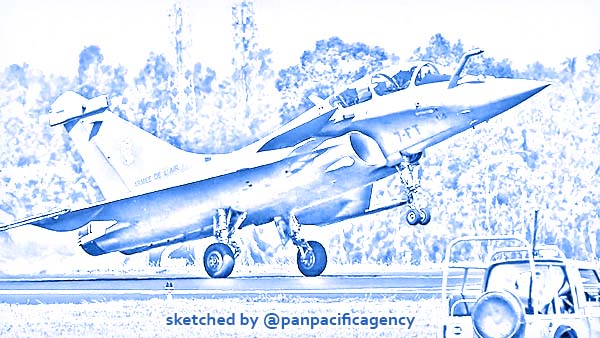In boost to IAF, three more Rafales to reach India today

French aircraft Rafale lands during the inauguration of the 12th edition of AERO India 2019 air show at Yelahanka airbase in Bengaluru on February 20. (AP Photo). Sketched by the Pan Pacific Agency.
NEW DELHI, Nov 4, 2020, The Asian Age. In a big boost to Indian Air Force’s air power, three more Rafale fighter jets will reach India, by Wednesday evening, from France, The Asian Age reported.
According to sources, these aircraft will take off from France on Wednesday morning and will arrive in India by wednesday evening.
This addition of aircraft, will take the total strength of Rafale fighter jets with IAF to eight further strengthening the capacity of India to take on threats emerging from China.
Indian Air Force is likely to operationalise the second batch of Rafale jets at the earliest.
In the first batch India had received five Rafale aircraft in July and these were inducted in IAF in September. The first batch has already been operationalised and has carried out sorties in the Ladakh sector.
In 2016, India had signed a Rs 59,000 crore deal for 36 Rafales which will be based in Ambala and Hasimara (West Bengal) air bases.
The 4.5 generation fighter aircraft, capable of carrying nuclear weapons provides IAF unmatched air superiority in the region with its advanced avionics and deadly weapon package which include Meteor, Scalp and HAMMER missiles.
Rafale jets give India an edge over China and Pakistan as it is armed with the most advanced beyond visual range Meteor air-to-air missiles which have a range of up to 150 kilometers. Meteor has the ability to chase down and destroy agile hostile fighters at even the furthest of ranges and has a no-escape zone many times greater than any other air-to-air missile.
Neither Pakistan nor China Air Force yet have a missile to counter it. These Meteor air-to-air missiles will prove deadly during a dogfight. Rafale fighters will also be armed with Scalp cruise air to surface missiles, which have a range of over 300 kilometers.